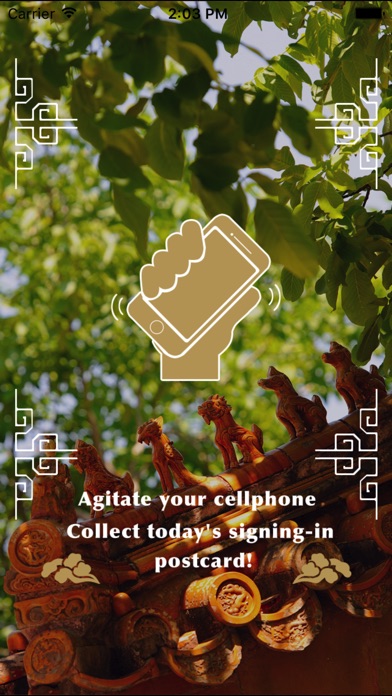
The Imperial Palace on the postcards
Its the Forbidden City youve never met.
Screens talk royal court gossip; Roof-figures introduce themselves; Treasures in the Imperial Treasures Museum are eager to talk about their experience; Hall of Great Harmony shares the old story about the fire it went through.
The Forbidden City is more than a city. The flowers and rare stones, the decorations, the imperial items, even the Palaces——collect postcards from them, and make up a different Forbidden City.
Features:
——Have a postcard-collecting tour under the guiding of Sir Cat.You can get a random postcard by passing a palace.
——One day a chance to“To the Court”: Shake your phone to get a new postcard.
——If you are in the Forbidden City now, tap the “Sign in” to get a rare postcard.
——At the day of 24 solar terms, youll get a postcard of particular solar term.
——You can check your postcards in “collection” page.
——And when you are checking your collections, put your phone horizontally to enjoy the surprising visual effect.
——The calendars cover for each month is also a postcard. Tap the signs on the calendar to check the postcard you got by daily sign-in.
——Informations of the Forbidden Ckty help you planning your trip conveniently.
About the Palace Museum
The Palace Museum, founded in 1925, was built up on the basis of the Forbidden City, which was the imperial palace of Ming and Qing dynasties. After 500 years of prosperity and decline, glory and disgrace, the emperors residence was finally open to public. Unique treasure in the Palace Museum is the Forbidden City, the largest and best-preserved wooden palace complex in the world. It is the pride of Chinese people, as well as the precious cultural heritage of all mankind. Nowadays, what used to be a forbidden imperial place occupies an area of 780 thousand square meters; it is not only a giant treasure house collecting precious objects of Ming and Qing imperial families, but also a vivid piece of record of the history of Ming and Qing court.



